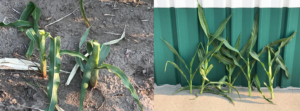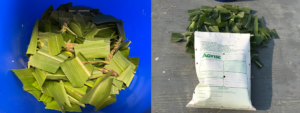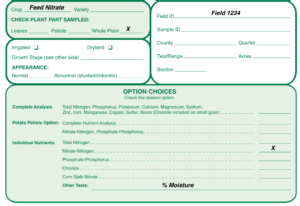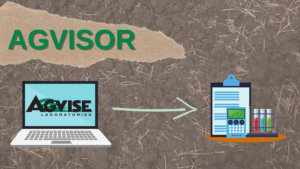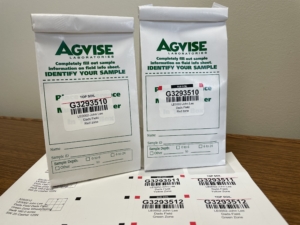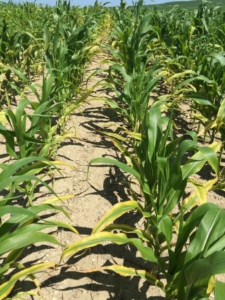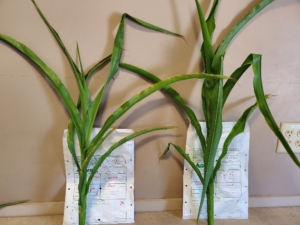Update: Feed Nitrate Testing in a Drought Year
Drought continues to stress crops across the upper Midwest and the Canadian Prairies. As crop conditions continue to deteriorate in some places, we have received more phone calls about salvaging the drought-stressed crop as livestock feed and the need for feed nitrate testing. As you consider what to do with your standing crop, whether to harvest for grain or cut for hay, an important part of that consideration will be the nitrate concentration of the crop.
When drought-stressed annual crops (e.g., wheat, barley, oat, corn) are cut or grazed, producers must exercise caution about livestock nitrate poisoning when feeding these forages. Drought-stressed crops often accumulate nitrate because plant uptake of nitrate exceeds plant growth and nitrogen utilization. Nitrate is usually concentrated in lower plant parts (lower stem or stalk). When livestock, particularly sheep and cattle, ingest forages with a high nitrate concentration, nitrate poisoning can occur.
Instructions for collecting and submitting a feed nitrate test
1. Collect the plant part that livestock will consume, which may be the whole aboveground plant. If grazing, be mindful of the grazing height because the plant nitrate concentration will be lower near the base of the plant. If baling for hay or chopping for silage, cut at the intended cutter bar height.
2. Cut plant material with sturdy garden shears into 1- to 2-inch pieces. Mix the chopped plant parts together and take one quart-sized subsample for analysis (about four good handfuls).
3. Place subsample in AGVISE Plant Sample Bag. Write “Feed Nitrate” as the crop choice and select “Nitrate-nitrogen” as the analysis option.
-
- If you are considering chopping corn for silage, also write “%Moisture” as an additional analysis because you will need to know if the moisture content is still adequate for silage fermentation. You may be surprised how much water will still be in drought-stressed corn stalks.
4. Ship plant sample to AGVISE Laboratories. If you cannot ship the sample right away, store it in a refrigerator until you can ship it.
IMPORTANT: Resample the hay or silage before feeding to any livestock. You need to know what is actually being fed to livestock, and you may need to blend it with other feed sources to dilute the nitrate concentration. For dry hay in bales, the nitrate concentration will not change in storage; use a hay probe to obtain the best possible feed sample. For silage, the nitrate concentration may decrease 20 to 50% during fermentation, so a fresh sample is necessary before feeding.
IMPORTANT: Many crop protection products have grazing restrictions on their labels that dictate if or when a crop treated with a product can be fed to livestock. Before using or selling a crop for livestock feed, check all labels of crop protection products that have been used on the crop this season. This includes seed treatments, herbicide applications, fungicide applications, and insecticide applications.
AGVISE Laboratories offers next-day turnaround for feed nitrate analysis. Rapid turnaround on nitrate analysis is important for producers debating to cut and bale or graze small grains or corn as livestock feed. We also provide livestock water analysis, which includes total dissolved solids, nitrate, and sulfate, to assess livestock drinking water quality. Please call AGVISE staff in Northwood, ND (701-587- 6010) or Benson, MN (320-843-4109) with questions about nitrate, feed and hay quality, or water analysis. We can send you sampling supplies if needed.
AGVISE Laboratories Online Supplies Store
Helpful resources on using drought-stressed crops for livestock feed:
Nitrate Poisoning of Livestock (NDSU)
Using Drought-Stressed Corn as Forage (SDSU)
Drought-Related Issues in Forage, Silage and Baleage (Univ. of Missouri)

